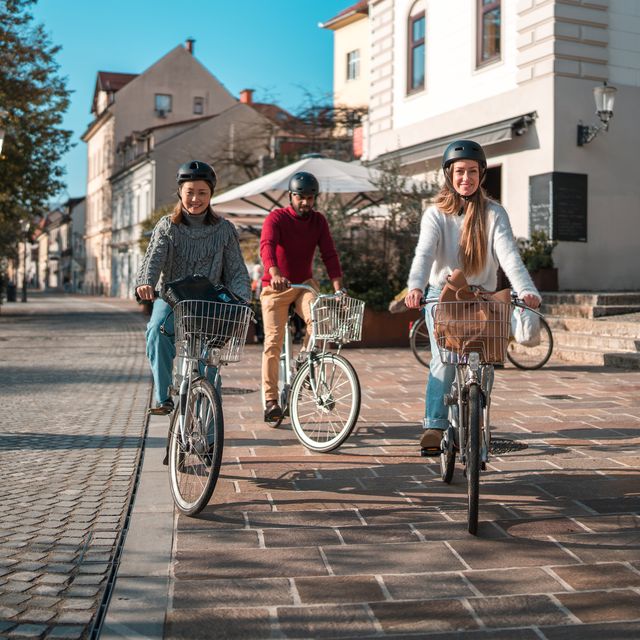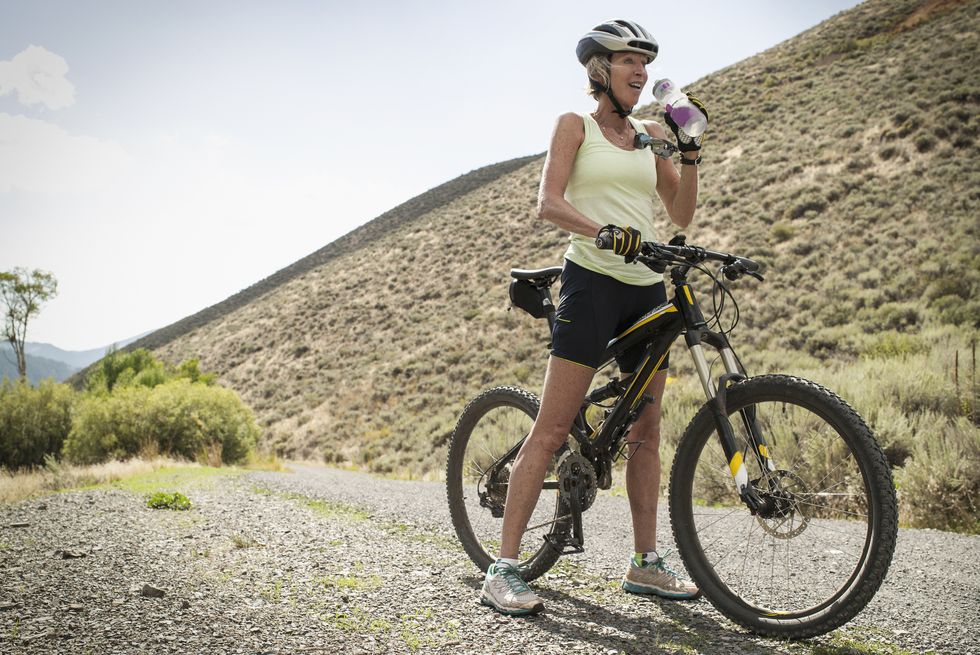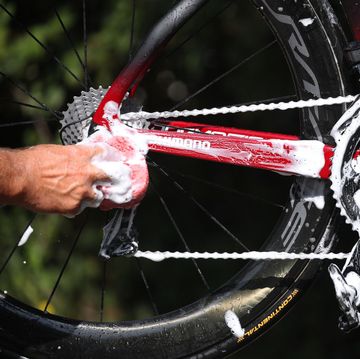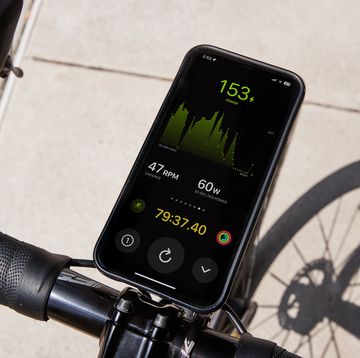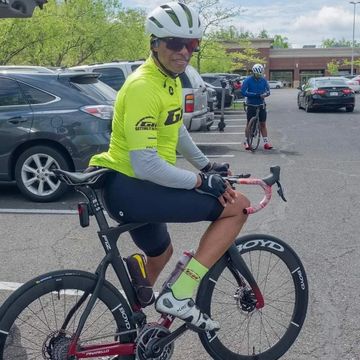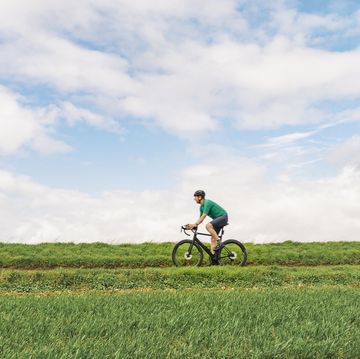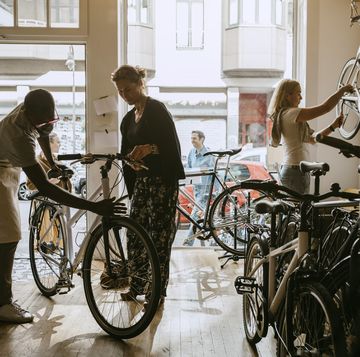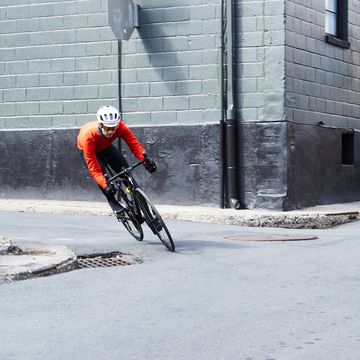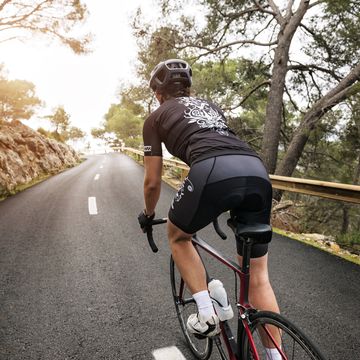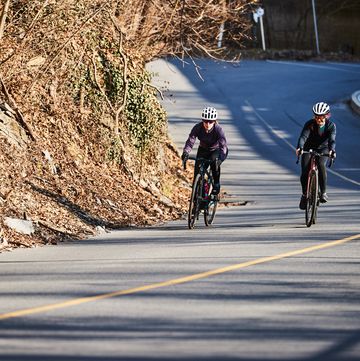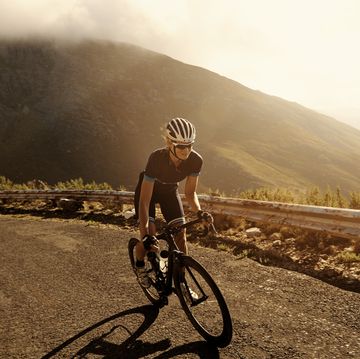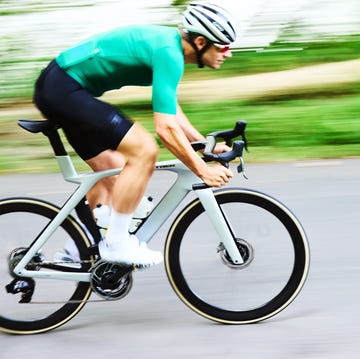If you find yourself jealous of people riding their bikes around town or going on adventurous bike trips across the world, know that it’s never too late to start cycling. And by learning how to ride a bike as an adult, you can gain a plethora of benefits, for both your physical and mental health. Plus, if you’re worried because you either never learned how to ride a bike or just haven’t been on a bike for years, we have the play-by-play on how to ride a bike as an adult.
To start, all you need is a bike, a helmet, and a safe wide-open space, like an empty parking lot or park. Then, follow the six easy steps below.
Learn How to Ride a Bike as an Adult
1. Get a Bike That Fits
First, make sure you can stand over your bike without the top tube pressing into you. (If you can’t, you may need a smaller size. A professional bike fit is important and super helpful, if you can get one done.)
Then lower the seat, so your feet can touch the ground—this is helpful for a new rider. You should be able to reach the handlebars and brakes comfortably.
If you’re not sure where to start on choosing a bike, we’ve got a list of the best beginner bikes to choose from.
2. Practice Hopping On and Off
To mount the bike, lean it toward you (to the side) while applying the brakes so it doesn’t roll or wobble. Apply the brakes again when getting off the bike.
3. Get Comfortable Braking
Braking is a crucial skill, Marilyn Northcotte, an urban cycling consultant in Wellington, New Zealand tells Bicycling. It will make you feel more secure while you ride and keep you safe in case you need to stop suddenly or slow down.
Before practicing while you ride, push your bike down the street while you walk next to it. Keep both hands on both brakes and apply pressure evenly, as well as gradually.
4. Learn to Glide
Now you’re ready to start moving. Practice the basic “balance method,” which involves scooting with your feet while on the bike, says Northcotte.
“Scooting along helps you to learn the feeling of balancing on two wheels,” Northcotte explains. “The aim is to push off and get both feet off the ground for as long as you can. If you need to put one foot down to correct the balance, then put both down and start again. Once you can glide along without touching your feet down to correct yourself, then you’re ready to begin pedaling.” Practice your glide until you can keep your feet up for three seconds.
5. Maintain Your Balance and Line of Vision
“Anything that involves balance is helpful and can be used as a point of reference,” Northcotte says. “For example, if you’ve ridden a scooter before with both feet on the platform, you should be able to balance on two wheels.”
Look toward where you want to go, instead of focusing on obstacles to avoid. Keep your eyes up and always look ahead instead of down. This will help you maintain balance and follow your line of vision.
6. Start Pedal Practice
Once you can maintain balance while gliding, have mastered braking and keeping your vision steady, you’re ready to pedal. Start with one foot on the ground and the opposite foot on a pedal in the two o’clock position to give you some momentum when you push off.
Then push down on the pedal and add your other foot as you move forward. You’ll notice the faster you pedal, the easier it is to maintain your balance. Practice pedaling circles around the park or parking lot.
Feel confident? Get off the bike and move your seat up so that your feet reach the pedals with a slight bend. Use cones or other obstacles to practice maneuvering. And just like that, you’re riding a bike!
